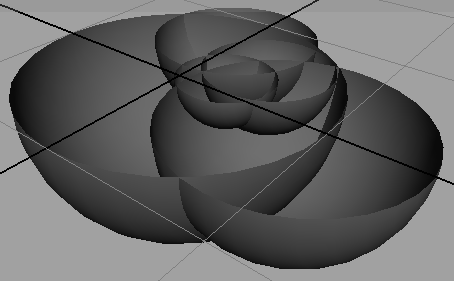Why Use Recursion?
Recursion is particulary helpful when modeling branching and/or
nested structures that consist of self-similar shapes.
For example, the space filling Hilbert curve shown in fig 1 was created
with a recursive procedure.
Example 1 - knobby sphere
The cluster of spheres in figure 1 was created with the procedure shown in listing 1.

Figure 1
Listing 1 (spheres.mel)
proc spheres(int $depth, vector $pnt, float $rad)
{
if($depth == 0)
return;
// create a sphere
sphere -p ($pnt.x) 0 ($pnt.z) -r $rad -esw 180;
// find a random location on the surface of the sphere
$pnt = unit(sphrand(1)) * $rad;
// recurse...
knobby($depth - 1, $pnt, $rad * 0.75);
}
|
Line 7 includes the -esw flag (endSweep) flag so that hemi-spheres
are produced. In addition the y coordinte is set to 0.0 to ensure the
top edges of the spheres are aligned to the x-z plane. In this way
it is easy to see that some "children" spheres are enclosed within
the inner "parent" spheres.
For a more sophisticated examples of recursion refer to the tutorials
"Mel: Recursion & Branching" and
"Hilbert Curve: Mel Implementation"